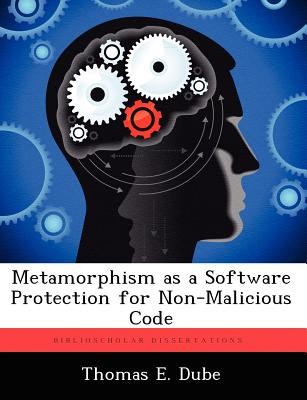
- We will send in 10–14 business days.
- Author: Thomas E Dube
- Publisher: BiblioScholar
- ISBN-10: 1249578914
- ISBN-13: 9781249578918
- Format: 18.9 x 24.6 x 0.7 cm, softcover
- Language: English
- SAVE -10% with code: EXTRA
Metamorphism as a Software Protection for Non-Malicious Code (e-book) (used book) | bookbook.eu
Reviews
Description
The software protection community is always seeking new methods for defending their products from unwanted reverse engineering, tampering, and piracy. Most current protections are static. Once integrated, the program never modifies them. Being static makes them stationary instead of moving targets. This observation begs a question, "Why not incorporate self-modification as a defensive measure?" Metamorphism is a defensive mechanism used in modern, advanced malware programs. Although the main impetus for this protection in malware is to avoid detection from anti-virus signature scanners by changing the program's form, certain metamorphism techniques also serve as anti-disassembler and anti-debugger protections. For example, opcode shifting is a metamorphic technique to confuse the program disassembly, but malware modifies these shifts dynamically unlike current static approaches. This research assessed the performance overhead of a simple opcode-shifting metamorphic engine and evaluated the instruction reach of this particular metamorphic transform. In addition, dynamic subroutine reordering was examined. Simple opcode shifts take only a few nanoseconds to execute on modern processors and a few shift bytes can mangle several instructions in a program's disassembly. A program can reorder subroutines in a short span of time (microseconds). The combined effects of these metamorphic transforms thwarted advanced debuggers, which are key tools in the attacker's arsenal.
EXTRA 10 % discount with code: EXTRA
The promotion ends in 18d.07:43:59
The discount code is valid when purchasing from 10 €. Discounts do not stack.
- Author: Thomas E Dube
- Publisher: BiblioScholar
- ISBN-10: 1249578914
- ISBN-13: 9781249578918
- Format: 18.9 x 24.6 x 0.7 cm, softcover
- Language: English English
The software protection community is always seeking new methods for defending their products from unwanted reverse engineering, tampering, and piracy. Most current protections are static. Once integrated, the program never modifies them. Being static makes them stationary instead of moving targets. This observation begs a question, "Why not incorporate self-modification as a defensive measure?" Metamorphism is a defensive mechanism used in modern, advanced malware programs. Although the main impetus for this protection in malware is to avoid detection from anti-virus signature scanners by changing the program's form, certain metamorphism techniques also serve as anti-disassembler and anti-debugger protections. For example, opcode shifting is a metamorphic technique to confuse the program disassembly, but malware modifies these shifts dynamically unlike current static approaches. This research assessed the performance overhead of a simple opcode-shifting metamorphic engine and evaluated the instruction reach of this particular metamorphic transform. In addition, dynamic subroutine reordering was examined. Simple opcode shifts take only a few nanoseconds to execute on modern processors and a few shift bytes can mangle several instructions in a program's disassembly. A program can reorder subroutines in a short span of time (microseconds). The combined effects of these metamorphic transforms thwarted advanced debuggers, which are key tools in the attacker's arsenal.


Reviews